15.2 Sociological Explanations of Religion
Many people think of religion as something individual because religious beliefs can be highly personal. For sociologists, religion is also a social institution. Social scientists recognize that religion exists as an organized and integrated set of beliefs, behaviours, and norms centred on basic social needs and values. Moreover, religion is a cultural universal found in all social groups. For instance, in every culture, funeral rites are practiced in some way, although these customs vary between cultures and within religious affiliations. Despite differences, there are common elements in a ceremony marking a person’s death, such as announcement of the death, care of the deceased, disposition, and ceremony or ritual. These universals, and the differences in how societies and individuals experience religion, provide rich material for sociological study. But why does religion exist in the first place?
Evolutionary Psychology
“Blind Pharisee, cleanse first that [which is] within the cup and platter, that the outside of them may be clean also” (Matthew 23:26, King James Bible).
“Let the (husband) employ his (wife)…in keeping clean, in religious duties, in the preparation of his food, and in looking after the household utensils” (9:11, Hindu Laws of Manu).
Despite the conflict that has accompanied religion over the centuries, it continues to exist, and in some cases thrive. How do we explain the origins and continued existence of religion? We will examine sociological theories below, but first we turn to evolutionary and psychological explanations.
Many psychologists explain the rise and persistence of religion in terms of Darwinian evolutionary theory. For this argument, they provide a psychological definition of the core religious experience or state of being common to all religion’s diverse social forms and settings. Psychologist Roger Cloninger (1993) defines this core religious experience as the disposition towards self-transcendence. It has three measurable components: self-forgetfulness (absorption in tasks and the ability to lose oneself in concentration), transpersonal identification (perception of spiritual union with the cosmos and the ability to reduce boundaries of self vs. other), and mysticism (perception or acceptance of things that cannot be rationally explained). The argument is that because this is a universal phenomenon, it must have a common physiological or genetic basis that is passed on between generations that enhances human survival.
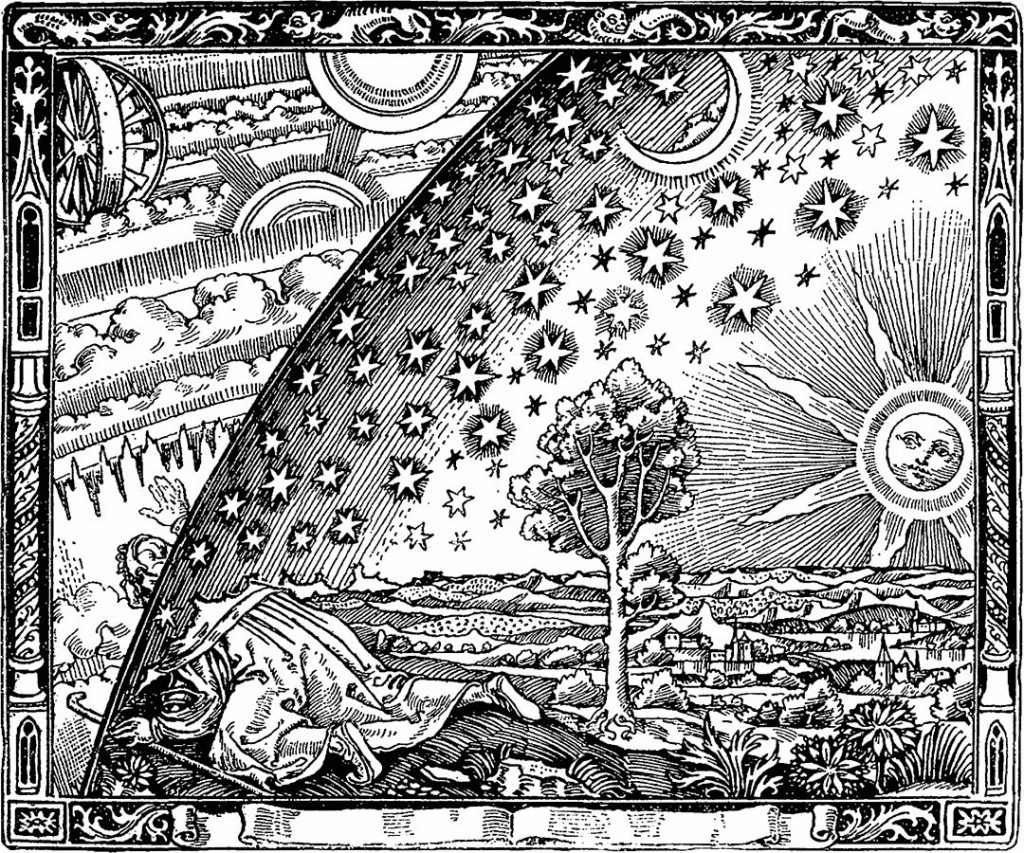
According to Charles Darwin all species are involved in a constant battle for survival, using adaptions as their primary weapon against an ever-changing, and hostile environment. Adaptions are genetic or behavioral traits shaped by environmental pressures and genetic variation. By dissecting religion to a core set of purposes, it can be categorized as an adaption that increases the chances of human survival. All adaptions successfully passed on to future generations aided at one point either in reproduction or survival because the genes that selected for them were passed on. This is the rule of natural selection (Darwin, 1859).
Much of evolutionary psychology aims at explaining the possible environments in which certain adaptions were selected. Although religion has the potential to cause unwanted side effects, such as wars, it still provides much greater benefits, by responding to numerous survival problems through collective religious processes. A very specific benefit, for example, is disease prevention. Many historic religions placed an emphasis on cleanliness, comparing it to spiritual purity. Consequently, there is also an evolutionary benefit to this religious virtue. During a period where disease was a constant threat to survival, idealizing cleanliness helped minimize communicable diseases from food, animals, and even humans.
Although disease prevention has been an important byproduct of religious practices around the world, evolutionary psychologists argue that the main benefit religion has provided to human survival is the mutual support provided by fellow members. More specifically, religion creates a framework for social cohesion and solidarity, even during times of loss, and grief, which has been a crucial competitive strategy of the human species. Rather than each individual being exclusively concerned with their own survival — in a kind of “survival of the fittest” logic — the religious disposition to self-transcendence provides a mechanism that explains the altruistic core of religious practice and the capacity of individuals to sacrifice themselves for the group or for abstract beliefs.
Dean Hamer (2005) for example describes a specific gene that correlates with the capacity for self-transcendence. After his research team isolated an association between the VMAT2 gene sequence and populations who scored high on psychological scales for self-transcendence, Hamer noted these genes were connected to the production of neurotransmitters known as monoamines. The effects of monoamines on the meso-limbic systems in the human body were similar to many stimulant drugs: feelings of euphoria and positive well-being. Moreover, his findings suggested that 40-50% of self-transcendence was heritable. What is striking about this evidence is the implication that evolution has favoured genes that are often displayed in religious populations. Hamer extends the evolutionary argument to suggest that religion, grounded genetically in a neuro-chemical ability for self-transcendence, provides competitive advantages for the human species in the forms of community well-being (higher rates of reciprocity and social welfare) and longevity (reduction of maladaptive behaviours and increased cleanliness).
Many similar effects can be observed in the present environment. Strawbridge, Sherna, Cohen, and Kaplan, (2001) conducted a 30-year longitudinal study on religious attendance and survival. Although they found that weekly religious attendance more often assisted in targeting and reducing maladaptive behaviors such as smoking, it also aided in maintaining social relations, and marriage (Strawbridge et al., 2001). Similar studies show correlations between religious affiliation to Christianity, and the self-perceived happiness of German students (Francis, Robbins, & White, 2003). Evolutionary psychology argues that these modern tendencies to feel happiness during a church congregation to reduce maladaptive behaviours are innate, sculpted by centuries of exposure to religion.
Evolutionist Richard Dawkins hypothesized a similar reason why religion has created such a lasting impact on society. His theory is explained by the creation of ‘memes’. Comparable to genes, memes are bits of information that can be imitated and transferred across cultures and generations (Dawkins, 2006). Unlike genes, which are physically contained within the human genome, memes are the units or “genetic material” of culture. As a vocal proponent of atheism, Dawkins believes the idea of God is a meme, working in the human mind the same way as a placebo effect. The God meme has tangible benefits to human society such as answers to questions about human transcendence and superficial comfort for daily difficulties, but the idea of God itself is a product of the human imagination (Dawkins, 2006). Although a human creation, the God meme is incredibly appealing, and as a result, has continually been passed on through cultural transfusion.
The logic of evolutionary psychology suggests that it is possible for religion to be replaced by another mechanism that is more beneficial to human survival. Just as Dawkins hypothesized that religious memes colonized societies around the world, this process could also be applied to secular memes. Modern secular countries provide public institutions that create the same social functions as religion, without the disadvantages of “irrational” religious restrictions based on unverifiable beliefs. The secularization thesis predicts that as societies become modern, religious authority will be replaced with public institutions. As Canada, and other countries develop, perhaps evolution will continue to favour secularization, demoting religion from its central place in social life, and religious conflicts to history textbooks and motel night tables.
Karl Marx

Where psychological theories of religion focus on the aspects of religion that can be described as products of individual subjective experience — the disposition towards self-transcendence, for example — sociological theories focus on the underlying social mechanisms religion sustains or serves. They tend to suspend questions about whether religious world views are true or not — e.g., does God exist? Is enlightenment achievable through meditation? etc. — and adopt some version of WI Thomas’s (1928) Thomas Theorem: “If men define situations as real, they are real in their consequences.”
From the point of view of the classical theorists in sociology, Thomas’s theorem was already implicit in the premise that the relationship to religion was a key variable needed to understand the transition from traditional society to modern society. Marx, Durkheim, Weber, and other early sociologists lived in a time when the validity of religion had been put into question. Traditional societies had been thoroughly religious societies, whereas modern society corresponded to the declining presence and influence of religious symbols and institutions. Nationalism and class replaced religion as a source of identity. Religion became increasingly a private, personal matter with the separation of church and state. In traditional societies the religious attitude towards the world had been “real in its consequences” for the conduct of life, for institutional organization, for power relations, and all other aspects of life. However, modern societies seemed inevitably to be on the path towards secularization in which people would no longer define religion as real. The question these sociologists grappled with was whether societies could work without the presence of a common religion.
Karl Marx explained religion as a product of human creation: “man makes religion, religion does not make man” (Marx, 1844/1977). In his theory, there was no “supernatural” reality or God. Instead, religion was the product of a projection. Humans projected an image of themselves onto a supernatural reality, which they then turned around and submitted to in the form of a superhuman God. It is in this context that Marx argued that religion was “the opium of the people” (Marx, 1844/1977). Religious belief was a kind of narcotic fantasy or illusion that prevented people from perceiving their true conditions of existence, firstly as the creators of God, and secondly as beings whose lives were defined by historical, economic and class relations. The suffering and hardship of people, central to religious mythology, were products of people’s location within the class system, not of their relationship to God, nor of the state of their souls. Their suffering was real, but their explanation of it was false. Therefore “religious suffering is at the same time an expression of real suffering and a protest against real suffering.”
However, Marx was not under the illusion that the mystifications of religion belief would simply disappear, vanquished by the superior knowledge of science and political-economic analysis. The problem of religion was in fact the central problem facing all critical analysis: the attachment to explanations that compensate for real social problems but do not allow them to be addressed. As he said, “the criticism of religion is the supposition [or beginning of] of all criticism” (Marx, 1844/1977). Until humans were able to recognize their power to change their circumstances in “the here and now” rather than “the beyond,” they would be prone to religious belief. They would continue to live under conditions of social inequality and grasp at the illusions of religion to cope. The critical sociological approach he proposed would be to thoroughly disillusion people about the rewards of the afterlife and bring them back to earth where real rewards could be obtained through collective action.
The demand to give up the illusions about their condition is a demand to give up a condition that requires illusion…. Criticism has plucked the imaginary flowers from the chains not so that man may bear chains without any imagination or comfort, but so that he may throw away the chains and pluck living flowers. The criticism of religion disillusions man so that he may think, act, and fashion his own reality as a disillusioned man come to his senses; so that he may revolve around himself as his real sun. Religion is only the illusory sun which revolves around man as long as he does not revolve around himself (Marx, 1844/1977).
Nevertheless, if Marx’s analysis is correct, it is a testament both to the persistence of the social conditions of suffering and to the comforts of holding to illusions, that religion not only continues to exist 170 years after Marx’s critique, but in many parts of the world appears to be undergoing a revival and expansion.
Émile Durkheim
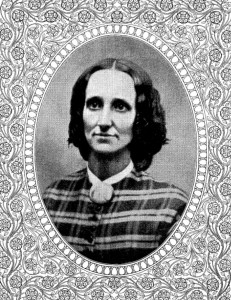
Émile Durkheim (1859-1917) explained the existence of religion in terms of the functions it performs in society. Like Marx, therefore, he argued that it was necessary to examine religion as a product of society, rather than as a product of a transcendent or supernatural presence (Durkheim, 1915/1964). Unlike Marx, however, Durkheim argued that religion fulfills real needs in each society; namely, to reinforce certain mental states, sustain social solidarity, establish basic rules or norms, and concentrate collective energies. These can be seen as the universal social functions of religion that underlie the unique natures of different religious systems all around the world, past and present (Sachs, 2011). He was particularly concerned about the capacity of religion to continue to perform these functions as societies entered the modern era in the 19th and 20th centuries. Durkheim hoped to uncover religion’s future in a new world that was breaking away from the traditional social norms that religion had sustained and supported (Durkheim, 1915/1964).
The key defining feature of religion for Durkheim was its ability to distinguish sacred things from profane things. In his last published work, The Elementary Forms of the Religious Life, he defined religion as: “a unified system of beliefs and practices relative to sacred things, that is to say, things set apart and forbidden – beliefs and practices which unite into one single moral community called a Church, all those who adhere to them” (Durkheim, 1915/1964). Sacred objects are things said to have been touched by divine presence. They are set apart through ritual practices and viewed as forbidden to ordinary, everyday contact and use. Profane objects on the other hand are items integrated into ordinary everyday living. They have no religious significance. From Durkheim’s social scientific point of view, it is the act of setting sacred and profane apart which contributes to their spiritual significance and reverence, rather than anything that actually inheres in them.
This basic dichotomy creates two distinct aspects of life, that of the ordinary and that of the sacred, that exist in mutual exclusion and in opposition to each other. This is the basis of numerous codes of behavior and spiritual practices. Durkheim argues that all religions, in any form and of any culture, share this trait. Therefore, a belief system, regardless of whether it encourages faith in a supernatural power, is identified as a religion of it outlines this divide and creates ritual actions and a code of conduct of how to interact with and around these sacred objects.
Durkheim examined the social functions of the division of the world into sacred and profane by studying a group of Australian Aboriginals that practiced totemism. He described totemism as the most basic and ancient forms of religion, and therefore the core of religious practice itself (Durkheim, 1915/1964). A totem, such as an animal or plant, is a sacred “symbol, a material expression of something else” such as a spirit or a god. Totemic societies are divided into clans based on the different totemic creatures each clan revered. In line with his argument that religious practice needs to be understood in sociological terms rather than supernatural terms, he noted that totemism existed to serve some very specific social functions. For example, the sanctity of the objects venerated as totems infuse the clan with a sense of social solidarity because they bring people together and focus their attention on the shared practice of ritual worship. They function to divide the sacred from the profane thereby establishing a ritually reinforced structure of social rules and norms, they enforce the social cohesion of the clans through the shared belief in a transcendent power, and they protect members of the society from each other since they all become sacred as participants in the religion.
In essence, totemism, like any religion, is merely a product of the members of a society projecting themselves and the real forces of society onto ‘sacred’ objects and powers. In Durkheim’s terms, all religious belief and ritual function in the same way. They create a collective consciousness and a focus for collective effervescence in society. Collective consciousness is the shared set of values, thoughts, and ideas that come into existence when the combined knowledge of a society manifests itself through a shared religious framework (Mellor & Shilling, 1996). Collective effervescence, on the other hand, is the elevated feeling experienced by individuals when they come together to express beliefs and perform rituals together as a group: the experience of an intense and positive feeling of excitement (Mellor & Shilling, 2011). In a religious context, this feeling is interpreted as a connection with divine presence, as being filled with the spirit of supernatural forces, but Durkheim argues that it is the material force of society itself that emerges when people come together and focus on a single object. As individuals actively engage in communal activities, their belief system gains plausibility, and the cycle intensifies. In worshipping the sacred, people worship society itself, finding themselves together as a group, reinforcing their ties to one another and reasserting solidarity of shared beliefs and practices (Mellor & Shilling, 1998).
The fundamental principles that explain the most basic and ancient religions like totemism, also explain the persistence of religion in society as societies grow in scale and complexity. However, in modern societies where other institutions often provide the basis for social solidarity, social norms, collective representations, and collective effervescence, will religious belief and ritual persist?
In his structural-functional analysis of religion, Durkheim outlined three functions that religion still serves in society, which help to explain its ongoing existence in modern societies. First, religion ensures social cohesion through the creation of a shared consciousness form participation in rituals and belief systems. Second, it formally enforces social norms and expectations of behavior, which serve to ensure predictability and control of human action. Third, religion serves to answer the most universal, ‘meaning of life’ questions that humans have pondered since the dawn of consciousness. As long as needs remain unsatisfied by other institutions in modern social systems, religion will exist to fill that void.
Making Connections: Classical Sociology
Émile Durkheim on Religion
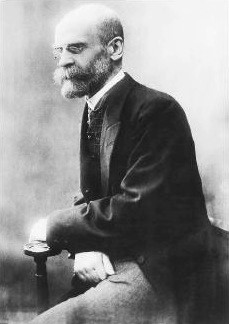
Durkheim’s father was the eighth in a line of father-son rabbis. Although Émile was the second son, he was chosen to pursue his father’s vocation and was given a good religious and secular education. He abandoned the idea of a religious or rabbinical career, however, and became very secular in his outlook. His sociological analysis of religion in The Elementary Forms of the Religious Life (1915/1964) was an example of this. In this work he was not interested in the theological questions of God’s existence or purpose, but in developing a very secular, sociological question: Whether God exists or not, how does religion function socially in a society?
He argued that beneath the irrationalism and the “barbarous and fantastic rites” of both the most primitive and the most modern religions is their ability to satisfy real social and human needs (Durkheim, 1915/1964). “There are no religions which are false,” he said. Religion performs the key function of providing social solidarity in a society. The rituals, the worship of icons, and the belief in supernatural beings “excite, maintain or recreate certain mental states” that bring people together, provide a ritual and symbolic focus, and unify them. This type of analysis became the basis of the functionalist perspective in sociology. He explained the existence and persistence of religion based on the necessary function it performed in unifying society.
Max Weber
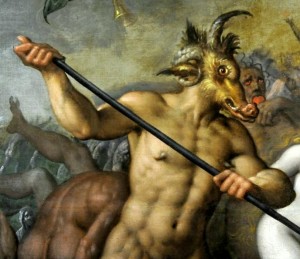
If Marx’s analysis represents the classical sociological formulation of the critical perspective on religion, and Durkheim’s the functionalist formulation, Max Weber’s analysis represents the classical formulation of the interpretive perspective on religion within sociology. His approach was to determine the meaning of religion in the conduct of life for members of society. Three key themes concerning religion emerge from his work: the concept of theodicy, the disenchantment of the world, and the Protestant Ethic.
One of Weber’s explanations for the origin and persistence of religion in society concerns its role in providing a meaningful explanation for the unequal “distribution of fortunes among men” (Weber, 1915/1958). As described earlier in the chapter, this is religion’s unique ability and authority to provide a theodicy: an explanation for why all-powerful Gods allow suffering, misfortune, and injustice to occur, even to “good people” who follow the moral and spiritual practices of their religion. Religious theodicies resolve the contradiction between “destiny and merit”(Weber, 1915/1958). They give meaning to why good or innocent people experience misfortune and suffering. Religions exist, therefore, because they successfully claim the authority to provide such explanations.
Weber describes three dominant forms of theodicy in world religions: dualism, predestination, and karma. In dualistic religions like Zoroastrianism, the power of a god is limited by the powers of evil — “the powers of light and truth, purity and goodness coexist and conflict with the powers of darkness and falsehood” (Weber, 1915 (1958) — and therefore suffering is explained as a consequence of the struggle between the dual powers of good and evil, gods and demons, in which evil occasionally wins out. The doctrine of predestination, which became very important in Weber’s theory of Calvinism and the Protestant Ethic (see below), explains suffering as the outcome of a destiny that a god has pre-assigned to individuals. God’s reasoning is invisible to believers and therefore inscrutable. Therefore, believers must accept that there is a higher divine reason for their suffering and continue to strive to be good. Finally, the belief in karma, central to religions such as Hinduism and Buddhism, explains suffering as a product of acts one committed in their former lives. Individuals must struggle in this life to rectify the evils accumulated from their previous lives. Each form of theodicy provides “rationally satisfying answers” to persistent questions about why gods permit suffering and misfortune without undermining the obligation of believers to pursue the religion’s values.
Weber’s analysis of religion was concerned not only with why religion exists, but with the role it played in social change. In particular, he was interested in the development of the modern worldview which he equated with the widespread processes of rationalization: the general tendency of modern institutions and most areas of life to be transformed by the application of technical reason, precise calculation, and rational organization. Again, central to his interpretivist framework, how people interpreted and saw the world provided the basis for an explanation of the types of social organization they created. In this regard, one of his central questions was to determine why rationalization emerged in the West and not the East. Eastern societies in China, India, and Persia had been in many respects more advanced culturally, scientifically, and organizationally than Europe for most of world history. However, they did not take the next step towards developing thoroughly modern, rationalized forms of organization and knowledge. Their relationship to religion formed a key part of his answer.
One component of rationalization was the process Weber described as the disenchantment of the world, which refers to the elimination of a superstitious or magical relationship to nature and life. Weber noted that many societies prevented processes of rationalization from occurring because of religious interdictions and restrictions against certain types of development. He describes, for example, the way Chinese geomancy interfered with the construction of railroads in China because because building structures “on certain mountains, forests, rivers, and cemetery hills” threatened to “disturb the rest of the spirits” (Weber, 1966). A contemporary example might be the beliefs concerning the sacredness of human life, which serve to restrict experimenting with human stem cells or genetic manipulation of the human genome. In modernity, the fundamental orientation to the world becomes increasingly disenchanted in the sense that “mysterious incalculable forces” of a spiritual or sacred nature no longer “come into play” in peoples understanding of it. Rather, “one can, in principle, master all things by calculation.” When the world becomes disenchanted, “one need no have recourse to magical means to master or implore the spirits, as did the savage, for whom such mysterious powers existed. Technical means and calculations perform the service” (Weber, 1919/1958). For Weber, disenchantment was one source for the rapid development and power of Western society, but also a source of irretrievable loss.
A second component of rationalization, particularly as it applies to the rise of capitalism as a highly rationalized economic system, was the formation of the Protestant Ethic. This will be discussed more fully below. The key point to note here is that Weber makes the argument that a specific ethic or way of life that developed among a few Protestant sects on the basis of religious doctrine or belief, (i.e., a way of interpreting the world and the role of humans within it), became a central material force of social change. The restrictions that religions imposed on economic activities and prevented them from being pursued in a purely rational, calculative manner, were challenged or subverted by the emergence and spread of new, equally religious, forms of belief and practice. However, the irony that Weber noted in the relationship between the Protestant sects and the rise of capitalism was that while the Protestant’s “duty to work hard in one’s calling” persisted, the particular beliefs in God that produced this “ethic” were replaced by secular belief systems. Capitalist rationality dispensed with religious belief but remained “haunted by the ghosts of dead religious beliefs” (Weber 1904/1958).
Making Connections: Classical Sociology
Max Weber on the Protestant Work Ethic
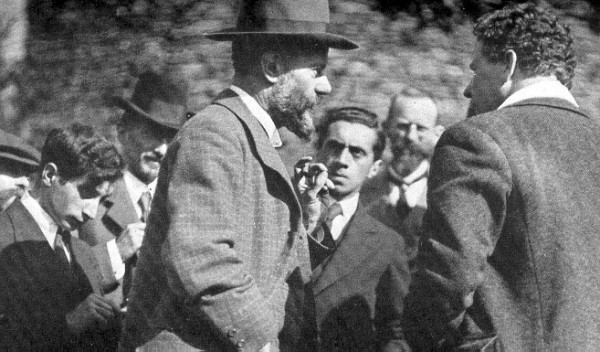
Weber is known best for his 1904 book, The Protestant Ethic and the Spirit of Capitalism. He noted that in modern industrial societies, business leaders and owners of capital, the higher grades of skilled labour, and the most technically and commercially trained personnel were overwhelmingly Protestant. He also noted the uneven development of capitalism in Europe, and how capitalism developed first in those areas dominated by Protestant sects. He asked, “Why were the districts of highest economic development at the same time particularly favourable to a revolution in the Church?” (i.e., the Protestant Reformation, 1517–1648) (Weber 1904/1958). His answer focused on the development of the Protestant Ethic—the duty to “work hard in one’s calling”—in particular Protestant sects such as Calvinism, Pietism, and Baptism.
As opposed to the traditional teachings of the Catholic Church in which poverty was a virtue and labour simply a means for maintaining the individual and community, the Protestant sects began to see hard, continuous labour itself as a spiritual end. Hard labour was firstly an ascetic technique of worldly renunciation and a defense against temptations and distractions such as an unclean life, sexual temptations, and religious doubts. Secondly, the doctrine of predestination among the Protestant sects believed that God’s disposition toward the individual was predetermined and could never be known or influenced by traditional Christian practices like confession, penance, and buying indulgences. However, one’s chosen occupation was a “calling” given by God, and the only sign of God’s favour or recognition in this world was to receive good fortune in one’s calling. Thus, material success and the steady accumulation of wealth through personal effort and prudence was seen as a sign of an individual’s state of grace. Weber argued that the ethic, or way of life, that developed around these beliefs was a key factor in creating the conditions for both the accumulation of capital, as the goal of economic activity, and for the creation of an industrious and disciplined labour force.
In this regard, Weber has often been seen as presenting an interpretivist explanation of the development of capital, as opposed to Marx’s historical materialist explanation. It is an element of cultural belief that leads to social change rather than the concrete organization and class struggles of the economic structure. It might be more accurate, however, to see Weber’s work building on Marx’s analysis of capitalism and to see his Protestant Ethic thesis as part of a broader set of themes concerning the process of rationalization: the general tendency of modern institutions and most areas of life to be transformed by the application of instrumental reason—rational bureaucratic organization, calculation, and technical reason—and the overcoming of “magical” thinking (which we earlier referred to as the “disenchantment of the world”). As the impediments toward rationalization were removed, organizations and institutions were restructured on the principle of maximum efficiency and specialization, while older, traditional (i.e., inefficient) types of organization were gradually eliminated because they could not compete.
The irony of the Protestant Ethic as one stage in this process is that the rationalization of capitalist business practices and organization of labour eventually dispensed with the religious goals of the ethic. At the end of The Protestant Ethic and the Spirit of Capitalism, Weber pessimistically describes the fate of modern humanity as an “iron cage.” The iron cage is Weber’s metaphor for the condition of modern humanity in a technical, rationally defined, and “efficiently” organized society. Having forgotten the spiritual (and other) goals of life, humanity succumbs to the goals of pure efficiency: an order “now bound to the technical and economic conditions of machine production” (Weber 1904/1958). The modern subject in the iron cage is “only a single cog in an ever-moving mechanism which prescribes to him [or her] an essentially fixed route of march” (Weber 1922/1958).
Peter Berger
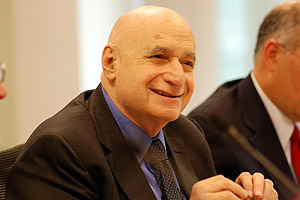
Peter Berger’s The Sacred Canopy (1967) is a modern sociological attempt to create a comprehensive explanation of religion. Berger’s approach to religion is based on the phenomenological perspective in sociology. Phenomenology seeks to describe the way in which all phenomena, including religion, arise as perceptions within the immediate sensorial experience and awareness of individual subjects. Phenomenologists study the ways in which the world, and us within it, first come to presence in experience and only later become separate objects, social structures, or selves. The founder of phenomenology, Edmund Husserl argued that only by “returning to things themselves” at this primary level of experience could the ground of scientific knowledge be established (Abram, 1997). For Berger, prior to the division of the world into subjects and objects and prior to any specific “knowledge” we form about it, religion also comes to presence as an awareness which only later takes on the specific qualities and meanings of the sacred. Religion is only secondarily a structure, institution, practice, or set of beliefs. Berger’s question was, how does it come to do so for different individuals in a consistent manner? How do humans go from the flux of immediate perception to a religious worldview?
For Berger, religion is a particular type of culture (Berger 1967). Like culture, it is a human creation that develops in response to the fundamental human condition: humans lack in-borne biological programming to help them cope with the problems of physical survival. Berger explains that, unlike other animals, human survival depends on creating cultural knowledges, techniques, and technologies, and passing them down from generation to generation. For humans to survive, the world must be culturally prepared as a world in which things and people have stable meanings. Whereas animals might simply be able to smell that certain mushrooms are poisonous, children must learn the difference between what is poisonous and non-poisonous based on their culture’s taxonomy of plants. Culture, Berger argues, exists therefore as an artifice that mediates between humans and nature and provides needed stability and predictability in human life. From the phenomenological point of view, culture enables both the ongoing creation of the world as a stable, objective social reality outside the subject and the simultaneous creation, or interiorization, of social roles and social expectations within the subject. Based on the cultural processes of objectification and interiorization, a stable, regular, predictable, taken for granted, reassuring world — or nomos (i.e., normative order) — is created.
Religion develops because the stability of culture is inherently fragile. Just as the immediate experience of the individual is subject to flux and change, so is the foundation of the ordered, meaningful world of culture. Cultural meanings tend to be fixed and rigid through time, whereas the underlying reality they describe is not. Events occur that are not explainable. They fall outside the categories and threaten to put the whole cultural framework or nomos into question. Berger states that “every nomos is an edifice erected in the face of the potent and alien forces of chaos” (Berger, 1967). Religion comes into existence as a solution to this problem. Religion can resolve the threat of instability and terror of anomie by postulating a supernatural agency or cosmological view of the world, which are unaffected by everyday inconstancy and uncertainty. In a religious cosmology the order described by culture is the natural order, that is, it is the way the gods have decided things must be. Things that occur that cannot be explained in human terms are explained as the products of divine will.
For Berger, religion therefore provides an “ultimate shield” for humanity — a sacred canopy — because it protects the meaningful world of the cultural order and fixes it in place by reference to a divinity that exists outside of the fragile human order. Religion is therefore a source of ultimate legitimation because it provides the social order with an unquestionable foundation of legitimacy: the way things are is the will of the gods. From a phenomenological point of view however, the price of this religious solution is a mode of forgetfulness and alienation. For the legitimation effect of religion to work and be plausible, humans must forget that they themselves have created religion. They must forget that religion is a human accomplishment.
In The Sacred Canopy, Berger argued that the processes of secularization will eventually erode the plausibility of religious belief. For religion to function as a sacred canopy and ultimate legitimation, it must supply the foundation for a shared belief system. In modern societies however, other types of knowledge and expert systems like science assume greater authority to describe the nature of the world and our role within it. Modern societies become more pluralistic as well, in the sense that a multiplicity of cultural and religious systems compete to provide meaning and orientation in peoples lives. Berger also noted the tendency for religion to become “privatized” in modern society. With the separation of church and state in the modern state system, religion has been increasingly seen as a matter of private, individual choice or a matter of private, family belief rather than the center of collective or public life. Therefore, because (a) pluralism undermines the ability of any single religion to offer an ultimate source of stability for society and because (b) the isolated, private beliefs of individuals cannot be the basis of a common shared cosmological order, religion will undergo a crisis in plausibility from which it is unlikely to recover. However, as we will see in Section 15.3, Berger (1999) felt obliged to revise his prediction about the demise of religion in the face of the contemporary religious revivals by Pentecostals, Muslims, and others.
Rodney Stark

In the 1980’s American sociologist Rodney Stark developed another significant and influential theory of religion. He, along with his colleague William Bainbridge, set out to create a systematic and predictive theory of religion that could be empirically tested based on the principles of rational choice theory (Stark & Bainbridge, 1985, [1987] 1996). Despite the dominant expectation that modern societies were becoming ever more secular, Stark believed that religion was, and would continue to be, an important and influential factor for individuals and society. “[S]o long as humans intensely seek certain rewards of great magnitude that remain unavailable through direct actions, they will be able to obtain credible compensators only from sources predicated on the supernatural” (Stark & Bainbridge, 1985).
For the last two centuries sociologists have been predicting religion’s ultimate demise in the face of modernity, but Stark argues that this has simply not happened (Stark & Bainbridge, 1996). He contends that “the vision of a religionless future is but illusion” (Stark & Bainbridge, 1985). Stark notes that church membership and new religious movements have actually increased in the United States as the country modernized. In Europe, where religious participation is relatively low, levels of individual belief nevertheless remain high, and participation has not undergone a long-term decline (Stark, 1999b). What explanation can be provided for the persistence of religion?
Stark begins with the stipulation that the importance of the supernatural must be recognized when studying religion. Belief in a higher force or power is the feature that distinguishes religions from non-religious beliefs and organizations. Any theory of religion must take this into account. Yet the question inevitably arises: why do people in a rational, material world continue to hold these ‘irrational’ beliefs in the supernatural?
Stark attempts to answer this question by proposing a number of basic, general rules about humans and their behavior. The most fundamental of these is from rational choice theory, namely that humans seek rewards and avoid costs (Stark & Bainbridge, 1985). Rational choice theory states that the most basic human motive is individual self-interest, and that all social activities are a product of rational decision making in which individuals continuously weigh the benefits of choices against their costs (Scott, 2014). A person who has a choice between two jobs, for example, would weigh the rewards of each one such as higher pay or better benefits against the possible costs of longer work hours or further commutes. Individuals will on balance choose the course of action that maximizes their rewards and minimizes their costs.
Of course, an individual’s attempt to make rational choices is confined by their personal knowledge, understanding, and beliefs about the available options. In this sense, even seemingly irrational decisions or beliefs can be understood as rational choices from the point of view of the individual decision maker (Stark, 1999a). Religious belief in the supernatural may seem irrational from an outside perspective because it involves an orientation to invisible, supernatural powers that affect the everyday material world through unobservable mechanisms. However, for the religious believer whose worldview is shaped by this assumption, it is completely rational that they would choose to worship and make offerings to these supernatural powers in the hopes of gaining rewards and avoiding wrath or misfortune. Moreover, by participating in religious practice, people also surround themselves with other believers who make the rationality of supernatural choices even more plausible.
According to Stark, the rewards people desire most intensely are often scarce or not available at all, such as an end to suffering or eternal life. Consequently, when such rewards cannot be attained through direct means, humans will create and exchange compensators. These are promises or IOUs of a reward at an unspecified future date, along with an explanation of how they can be acquired. The individual accepts the promise of a future reward like eternal life after death in compensation for not being able to have it here and now, but “pays” for it upfront so to speak through the “costs” of a lifetime of religious devotion, ritual observance, self-denial, and faith (Stark & Bainbridge, 1985).
Stark argues that rewards such as these are so monumental and scarce that they can only be provided through a supernatural source. “Systems of thought that reject the supernatural lack all means to credibly promise such rewards as eternal life in any fashion” (Stark & Bainbridge, 1985). This is why religious belief persists. In other words, a person must believe that a supernatural power exists which is capable of providing this reward to rationally believe that it is attainable. In this sense, religious belief and practice are rational choices humans make to get the most coveted rewards of human existence. Religious organizations function to provide compensators for these rewards by claiming to provide access to supernatural powers or deities.
For Stark, this is the root of why religion continues to exist in the modern world, and why it will continue to persist. For as long as people desire solutions to the most essential human questions, and these are not provided by other sources, there will be a rational cost/benefit analysis that favours the choice to exchange religious devotion and practice for future spiritual “pay offs.”
From there Stark develops his theory, aptly referred to as the “rational choice theory of religion,” to generate 344 deductive, testable propositions which offer explanations to nearly every aspect of religion. For example, he proposes that “as societies become older, larger and more cosmopolitan they will worship fewer gods of greater scope” (Stark & Bainbridge, 1996). By using a positivist approach, Stark creates a theory where every proposition, including this one, can in principle be tested. The proposition above could be verified by examining the number of gods and their powers in the religions of small, traditional societies and comparing that to the number of gods worshipped in more established, modern ones.
In reality, many of the propositions are difficult to test because the concepts he uses are hard to measure or compare between religions. How does one empirically quantify the scope of a certain god and compare it to that of an unrelated god from a different religion? His theory has also been critiqued for having an inherent bias towards monotheistic and particularly Protestant Christian measures of religion (Carroll, 1996). In other words, he places higher value on measures of religiosity that fit the Protestant model, such as belief and adherence to doctrine, over those that better describe other religions, such as the ritual aspects of Hinduism or Catholicism. His work may then implicitly suggest that Protestants are more religious than the others based on these skewed measures of religiousness. Despite these criticisms, Stark’s theory continues to hold merit for its systematic and broad approach to looking at all facets of religion to explain the reasons for the persistence of religious beliefs today.
Feminist Approaches to Religion
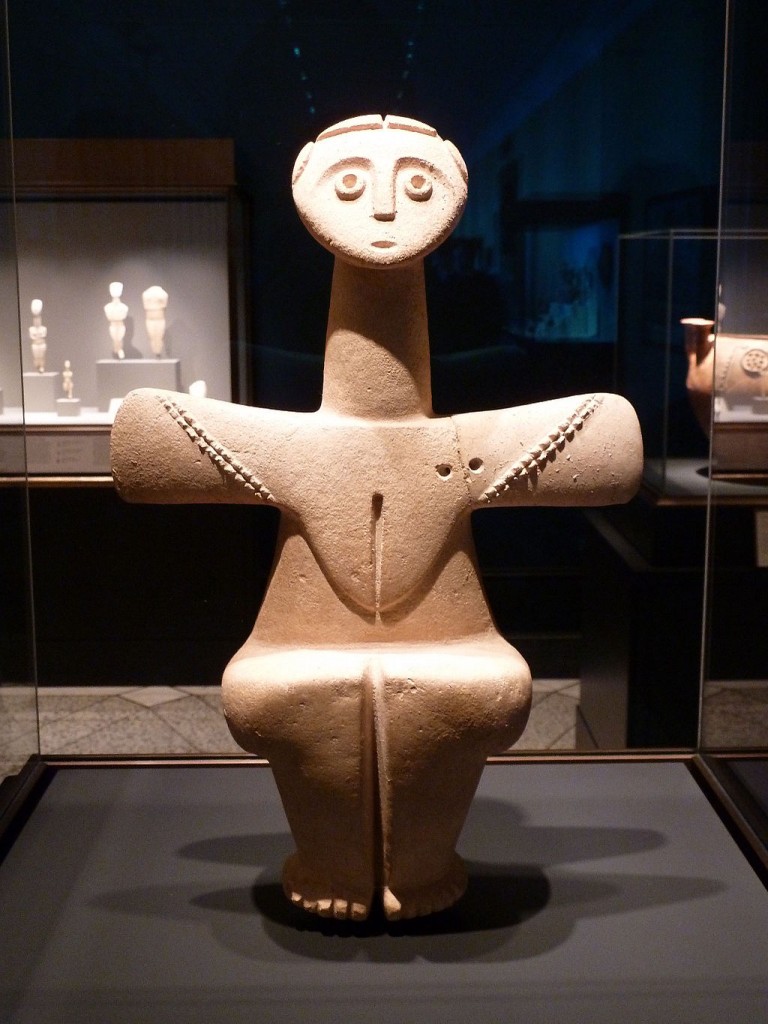
Feminist theories of religion analyze and critique the ways in which sacred texts and religious practices portray and subordinate — or empower — women, femininity, and female sexuality (Zwissler, 2012). Theorists within this area of study look at religion’s contribution to the oppression or empowerment of women within society, as well as provide analyses of the challenges that women face within different religious practices. The crucial insight into religion that forms the basis for feminist research is the gendered nature of religion (Erikson, 1992). Women’s place and experience within religious traditions differ significantly from men. Feminists therefore argue that questions about gender are essential for a meaningful analysis and explanation of religion.
In one line of inquiry, feminist theorists of religion have analyzed the representation of women within sacred religious texts, identifying and critiquing the way women are portrayed. For example, the gender of the deity is an issue for women, particularly in the monotheistic Abrahamic religions such as Christianity, Islam, and Judaism (Zwissler, 2012). God, within these religious beliefs, is usually understood as male. Mary Daly (1973), a feminist theologian, famously stated, “if God is male, then the male is God.” Individuals within these religious practices are socialized to see men and the qualities of masculinity as having greater importance than women and the qualities femininity, thus perpetuating the rationales and gender ideologies that legitimate women’s subordination in society. The question this raises is whether religion is therefore the direct cause of misogyny—the aversion or distaste for people of the female sex, including belittling, sexual objectification, sexual violence, and discrimination against women—or whether male-dominated religious practices are the product of broader gendered inequalities and societal norms outside of religion (Zwissler, 2012)?
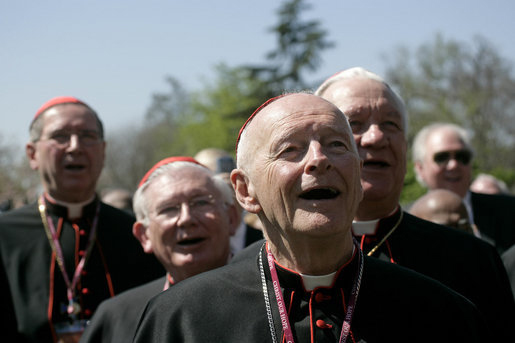
A second line of inquiry focuses on why power relationships within religious institutions are typically gendered (Erikson, 1992). Feminist theorists note that women are often prevented from holding positions of power within religious practice. Ministers, imams, rabbis, buddhas, and Brahmin priests are positions within religious hierarchies which have traditionally excluded women. Despite this, cross-culturally women are proportionately more religious than men. Surveys across North America and Europe demonstrate that more women identify as being religious than men, have deeper levels of religiosity than men, and attend church more regularly than men by a ratio of 3:2 (Dawson & Thiessen, 2014). This can be seen as a paradox within feminist religious studies. In an ideal meritocracy, spiritual elites would be chosen from those with the most spiritual “experience,” but this is not the case.
Linda Woodhead’s (2007) research seeks to examine the question of why more women than men identify as being religious when religions are typically patriarchal, both in their contents and their institutional hierarchies. Her key insight is that women’s position in patriarchal religion is not monolithic. Women differ in how they “negotiate” their gender status and their religious practice. Placed along two axes (see Figure 15.23) , Woodhead identifies four distinct religious “strategies” women adopt to position themselves within the dominant religious narrative (“mainstream” or “marginal”) and with respect to the religious status quo (“confirmatory” or “challenging”):
- The consolidating strategy of women who accept the existing gendered distribution of power within their religion as a means of affirming and consolidating the security and predictability that traditional gender roles provide.
- The tactical strategy of women who take part in and use religion in order to have the intimate interaction and support of other women.
- The questing strategy of women who seek out different forms of religion like New Age spiritualties, meditation, or Wicca to find fulfilment through an inner spiritual quest (rather than addressing the social power structures of religion directly).
- The counter-cultural strategy of women that reject traditional religion and create religious communities that focus on empowering women (e.g., the goddess feminist movement of Starhawk and others).
The challenges faced by women are different within each religion, and therefore the strategies women of faith use to change or work within their respective religion may vary. Woodhead’s model emphasizes however that women are not simply manipulated by religious traditions but exercise agency, albeit with different orientations and goals (Woodhead, 2007).
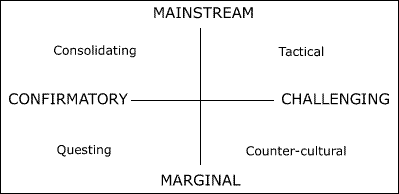
Being an interdisciplinary perspective, feminism brings a diversity of voices into the discussion, illuminating critical issues of inequality, oppression, and power imbalance, all of which are of great importance to the study of sociology. Analysis of the gender structures within religious practices worldwide promotes a deeper understanding of how diverse cultures and traditions function. The understanding that women often do not identify as being oppressed by their religion is an important insight in trying to fully understand the nature of gendered religious practice on a global scale.
Media Attributions
- Figure 15.13 The Flammarion (engraving), from Camille Flammarion’s L’atmosphère: météorologie populaire (1888), via Wikimedia Commons, is in the public domain.
- Figure 15.14 When bachelor dens cast over waking hours a loneliness so deep, from the Library of Congress Prints and Photographs Division, Reproduction number: LC-DIG-stereo-1s42991, is in the public domain.
- Figure 15.15 Mary Baker Eddy, founder of Christian Science, from a tintype given to Mrs. Sarah Crosby in the summer of 1864, by unknown artist, via Wikimedia Commons, is in the public domain.
- Figure 15.16 Émile Durkheim (1858–1917), via Wikimedia Commons, is in the public domain.
- Figure 15.17 Detail from The Last Judgment (, 1580s)by Jacob de Backer (circa 1540/1545–1591/1600), via Wikimedia Commons, is in the public domain.
- Figure 15.18 Max Weber 1917, by Alfred Bischoff (1882–1946), via Wikimedia Commons, is in the public domain.
- Figure 15.19. Peter Berger by unknown photographer, via Pew Research Center, is used under Pew Research Center use policy.
- Figure 15.20. Jesus Loves Wal*Mart, by Mark Trammell, via Flickr, is used under a CC BY-NC-SA 2.0 licence.
- Figure 15.21. Fertility Goddess (Chalcolithic, Cypress, 3000-2500 BC) Limestone, by Dave & Margie Hill, via Wikimedia Commons, used under a CC BY-SA 2.0 licence.
- Figure 15.22 Clergy sing Happy Birthday to Benedictus XVI, by David Bohrer, via Wikimedia Commons, is in the public domain.
- Figure 15.23 Fig. 1 Religion’s positioning in relation to gender by Linda Woodhead (2007) via Sage Publications Inc. This falls under Sage Knowledge’s terms of Acceptable Use.

